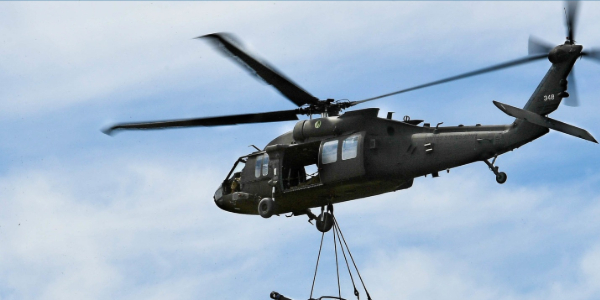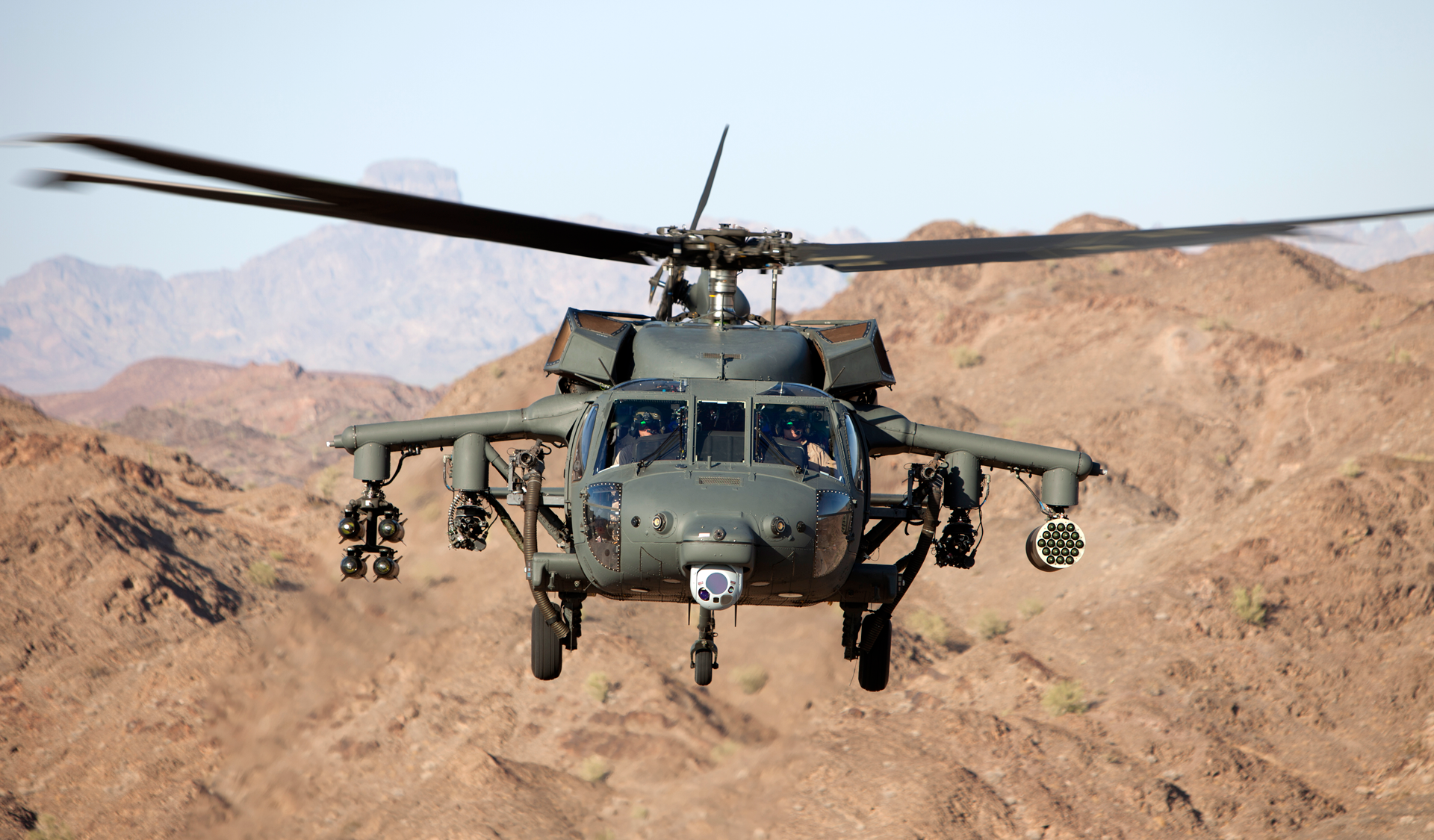Discover the Advanced Safety And Security Features and Redundancies of the Blackhawk Helicopter
Discover the Advanced Safety And Security Features and Redundancies of the Blackhawk Helicopter
Blog Article
Introducing the Power and Flexibility of the Blackhawk Helicopter
The Blackhawk helicopter stands as a testament to design excellence and armed forces innovation, considerably forming the landscape of modern aerial operations. Originally established in the late 1960s, this dual-engine aircraft has actually progressed into a multifaceted system efficient in executing a variety of missions, from tactical troop deployments to urgent medical evacuations. Its style incorporates sophisticated technology and materials, improving both performance and survivability. As we explore its background and functional abilities, one should think about exactly how the Blackhawk proceeds to affect contemporary fight methods and altruistic initiatives alike. What does this mean for the future of armed forces aeronautics?
History of the Blackhawk
The history of the Blackhawk helicopter is noted by substantial technological innovations and a strategic advancement in army air travel. Developed in the late 1960s by Sikorsky Airplane, the UH-60 Blackhawk was originally conceived to change the older UH-1 Iroquois, generally known as the "Huey." The Blackhawk's initial trip happened in 1974, and it was officially introduced to the U.S. Army in 1979.


This airplane was designed to satisfy the requiring needs of modern-day warfare, focusing on rate, toughness, and flexibility (Blackhawk Helicopter). Its capability to run in different environments, paired with innovative avionics and design functions, rapidly established the Blackhawk as an important property for army procedures worldwide
Throughout the 1980s and 1990s, the Blackhawk saw comprehensive use in numerous problems, including the Gulf War and altruistic objectives. Today, the Blackhawk stays an iconic icon of military aviation, continuously improved to satisfy modern obstacles.
Key Attributes and Specs
Blackhawk helicopters are renowned for their engineering quality and functional flexibility, flaunting a series of crucial attributes and specifications that improve their performance in numerous military roles. Among one of the most substantial qualities is their dual-engine setup, typically powered by the T700-GE-701C engines, which provide outstanding reliability and performance. The helicopter has a maximum cruise speed of around 150 knots and a solution ceiling of about 20,000 feet, enabling it to run successfully in diverse environments.
The Blackhawk's airframe is created from innovative composite materials and aluminum alloys, guaranteeing a robust structure while minimizing weight. It features a totally expressed rotor system that offers exceptional agility and stability. The helicopter can accommodate up to 11 combat troops or carry approximately 8,000 extra pounds of outside cargo, making it highly versatile for numerous missions.
Additionally, the Blackhawk is furnished with innovative avionics and interaction systems, boosting situational awareness and goal control. Its ability to operate in damaging weather, integrated with its low acoustic trademark, makes it a stealthy alternative for tactical operations. Overall, these attributes contribute to the Blackhawk's track record as a cornerstone of modern-day armed forces aeronautics.
Versatile Operational Duties
Prominent for their engineering excellence and advanced capacities, Blackhawk helicopters offer a multitude of functional roles within army structures. Initially designed for troop transport, their versatility has actually increased, permitting them to carry out various objectives successfully.
Among the primary duties of the Blackhawk is as an energy helicopter, facilitating logistical assistance by transporting workers and supplies to and from remote places. Furthermore, they succeed in medical evacuation (MEDEVAC) procedures, geared up with sophisticated medical devices and workers to supply critical treatment in the field.
In battle circumstances, Blackhawks can run as armed companion platforms, supporting ground pressures by involving enemy possessions while ensuring troop safety and security. Their ability for special operations makes them crucial; they can carry out reconnaissance objectives, employees recovery, and direct action raids, usually in high-threat atmospheres.
Moreover, the Blackhawk's flexibility permits it to sustain altruistic objectives and catastrophe reaction efforts, supplying aid and important solutions in times of dilemma. This wide spectrum of operational functions demonstrates the Blackhawk helicopter's unmatched versatility, declaring its standing Full Article as a crucial possession in modern-day military procedures worldwide.
Technical Developments
Various technical developments add to the Blackhawk helicopter's extraordinary performance and adaptability in varied functional environments. One of the most considerable developments is its composite rotor blades, which improve lift and maneuverability while lowering weight and maintenance needs. The rotor system employs weblink advanced materials that strengthen longevity and stand up to ecological destruction, making sure dependable procedure in extreme conditions.
Additionally, the Blackhawk is geared up with a modern avionics collection that integrates innovative navigation and communication systems - Blackhawk Helicopter. This consists of GPS, radar, and multi-function screens that facilitate real-time situational recognition for pilots, contributing to goal success under challenging situations
Furthermore, the helicopter's fly-by-wire control system enables exact handling and boosted responsiveness, supplying pilots with boosted control during complex maneuvers. The unification of advanced engine modern technology, such as the T700-GE-701C engine, further improves performance, using increased power output and gas efficiency.
Finally, modular design concepts make it possible for rapid reconfiguration for numerous objectives, from army transport to clinical evacuation, making the Blackhawk a flexible property in humanitarian and army operations. These technological technologies jointly make certain that the Blackhawk stays a formidable visibility overhead.
Influence on Modern Warfare

Furnished with sophisticated avionics and communication systems, the Blackhawk enables smooth control among ground and air units, making certain prompt and accurate feedback to vibrant fight situations. Its versatility enables for quick implementation in varied settings, from urban settings to sturdy surfaces, showing the complex nature of modern war.
In Addition, the Blackhawk's exceptional rate and dexterity facilitate fast insertion and removal of personnel, decreasing exposure to enemy fire. Its capability to run in aggressive conditions, coupled with advanced defensive steps, improves survivability and goal success prices.
As modern disputes significantly depend on joint operations and rapid reaction, the Blackhawk helicopter continues to be at the forefront of military technique, symbolizing the advancement of air flexibility and the important function of air power in accomplishing strategic purposes. Its influence on contemporary war remains to redefine the capacities of militaries globally.

Verdict
Finally, the Blackhawk helicopter exhibits the crossway of sophisticated design and check functional adaptability, strengthening its status as a foundation of contemporary armed forces aeronautics. Its historic relevance, impressive attributes, and flexibility across numerous mission profiles highlight its important duty in contemporary warfare. As technological advancements remain to improve its capacities, the Blackhawk stays a necessary asset for militaries worldwide, demonstrating unmatched efficiency in both combat and altruistic operations.
The Blackhawk helicopter stands as a testament to engineering quality and armed forces advancement, dramatically shaping the landscape of contemporary aerial procedures.The history of the Blackhawk helicopter is marked by significant technical improvements and a critical development in army air travel.Blackhawk helicopters are renowned for their engineering quality and operational adaptability, flaunting an array of crucial functions and specifications that enhance their efficiency in numerous military duties.Various technological developments add to the Blackhawk helicopter's phenomenal efficiency and adaptability in diverse operational environments.In final thought, the Blackhawk helicopter exhibits the intersection of sophisticated engineering and functional convenience, solidifying its status as a keystone of contemporary armed forces aeronautics.
Report this page